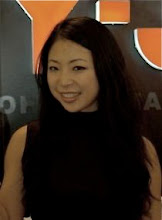 One person, one camera, one day, no stand-up. We just try to tell a story.
One person, one camera, one day, no stand-up. We just try to tell a story.A veteran video reporter Michael Rosenblum, the founder of Rosenblum TV, is reshaping traditional TV production by replacing high-cost television crew with one journalist with portable cameras and much affordable editing software.
The cost of a portable camera and editing software has gone down from $1 million to $1,000 when televisions used on-the-shoulder cameras and traditional editing suites. Not only the prices have fallen so much, the gadgets are also much easier to use. Ten years ago, it was necessary to have a production team with a cameraman, a sound man, a producer, reporters and a van. Not anymore. "Any 9-year-old can shoot and edit a video now. Time has changed," Rosenblum said.
In 2006, Rosenblum, a former CBS reporter, started a video training program in New York and Santa Barbara. Most recently, he teamed up with Jeff Jarvis, director of the journalism department of CUNY (City University of New York), to give one-day workshop of video shooting.
People with no experience walked in the studio taking courses from "one-day introduction" to "one-week professional training." In a 4-day program, students learn everything from video shooting, scripting, tracking, editing, producing to uploading. The course charges $2,500 per person and are booked up through 2009, according to the registration desk at its New York office. "It's the public that wants to join in. It's like blogging, video blogging, or vlogging, is become a very powerful process," Rosenblum said.
"I always told cameramen that they were in an archaic job that doesn't exist anymore. It doesn't make me the most popular person in the world, but I could not care less." Rosenblum restructured BBC a few years ago. As a result, BBC cut its cost by 70% and the number of cameras covering the news on a daily basis has increased from 85 to 750.
Some critics say "they are trading quality for lower cost." The fact that Rosenblum would choose a cheap $200 Flip camcorder over a $5,000 one speaks for itself. "What Rosenberg is doing is making affordable housing," Adam Najberg, an editor of the Wall Street Journal who oversees its video branch, said.
"What we are comparing here is between raw footage on the web and excellent story telling," Najberg said. What Rosenblum is doing is a jump-start to push people into the area, but even a godfather can only do this much. "It is up to everybody to go ahead," Najberg said: "It is like in baseball, even though few will make it, everybody eventually wants to play for the Yankees."
But some productions on Rosenblum TV say the opposite. The Healing Fields, a documentary done by Alexandra Garcia, a student of Rosenblum TV workshop, won this year's Washington Post video grant. Websites like travelchannel.com have solicited Rosenblum TV to use its productions on a regular basis. They pay $250 for one-minute production they use.




No comments:
Post a Comment